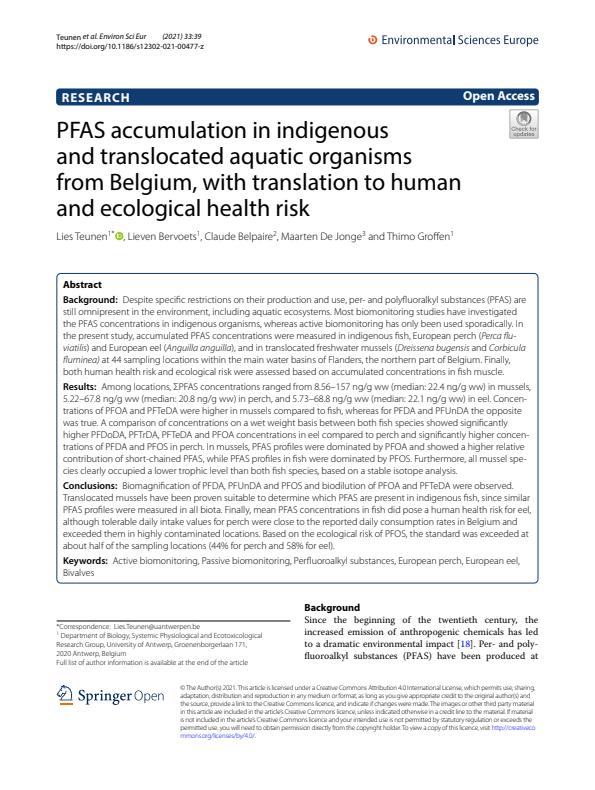PFAS accumulation in indigenous and translocated aquatic organisms from Belgium, with translation to human and ecological health risk
Details
| Volume | 33 |
|---|---|
| Type | A1: Web of Science-article |
| Category | Research |
| Magazine | Environmental Sciences Europe |
| Issns | 2190-4715 |
| Language | English |
Bibtex
@misc{2894c43d-5baf-4fd2-b6c7-d1a2b23ab6f7,
title = "PFAS accumulation in indigenous and translocated aquatic organisms from Belgium, with translation to human and ecological health risk",
abstract = "Despite specific restrictions on their production and use, per- and polyfluoralkyl substances (PFAS) are still omnipresent in the environment, including aquatic ecosystems. Most biomonitoring studies have investigated the PFAS concentrations in indigenous organisms, whereas active biomonitoring has only been used sporadically. In the present study, accumulated PFAS concentrations were measured in indigenous fish, European perch (Perca fluviatilis) and European eel (Anguilla anguilla), and in translocated freshwater mussels (Dreissena bugensis and Corbicula fluminea) at 44 sampling locations within the main water basins of Flanders, the northern part of Belgium. Finally, both human health risk and ecological risk were assessed based on accumulated concentrations in fish muscle.",
author = "Lies Teunen and Lieven Bervoets and Claude Belpaire and Maarten De Jonge and Thimo Groffen",
year = "2021",
month = mar,
day = "29",
doi = "https://doi.org/10.1186/s12302-021-00477-z",
language = "English",
publisher = "Instituut voor Natuur- en Bosonderzoek",
address = "Belgium,
type = "Other"
}
Authors
Lies TeunenLieven Bervoets
Claude Belpaire
Maarten De Jonge
Thimo Groffen

